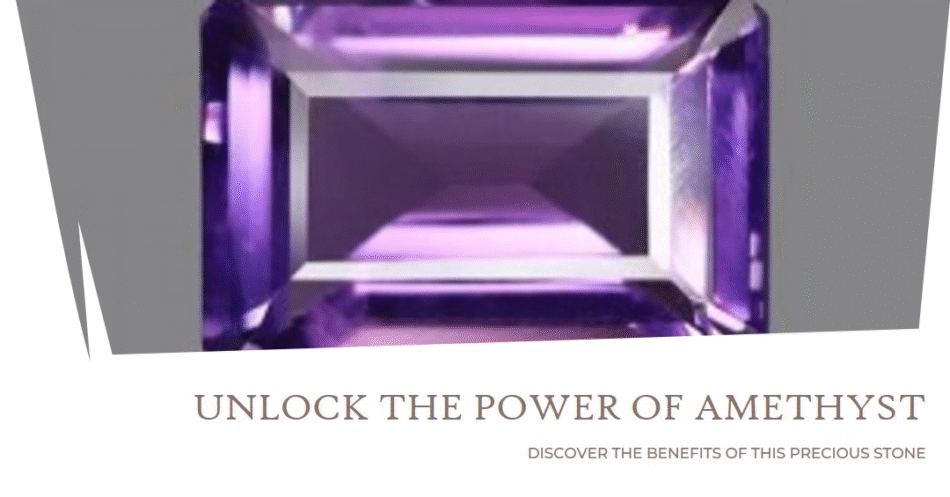Amethyst, a variety of quartz prized for its deep violet to light lavender hues, has captivated civilizations for thousands of years. Its rich history, spiritual significance, and visual appeal make it one of the most sought-after semi-precious stones. In today’s market, understanding the natural Amethyst stone price is essential for both buyers and collectors. Below, we delve into every factor that determines its price, so you can make an informed purchase.
What is Amethyst?
Amethyst is a violet variety of quartz that gets its color from natural irradiation, iron impurities, and trace elements. It ranks 7 on the Mohs hardness scale, making it durable for everyday wear. From being revered by ancient Greeks to becoming a symbol of royalty, Amethyst has long been associated with spiritual protection, inner peace, and clarity.
Current Market Value of Natural Amethyst Stone
The natural Amethyst stone price varies depending on several factors including origin, clarity, size, and cut. In general:
-
Low-grade Amethyst (pale color or heavily included): $2 – $5 per carat
-
Mid-grade Amethyst (good color with minimal inclusions): $5 – $15 per carat
-
High-grade Amethyst (deep purple with excellent clarity): $20 – $50 per carat
-
Exceptional-quality Amethyst (museum grade, often from Uruguay or Siberia): $50 – $100+ per carat
Top Factors Influencing Amethyst Prices
1. Color Saturation
The most valuable Amethyst stones exhibit a rich, even, deep purple or violet tone. Stones with red flashes or a grape jelly tone are highly prized. Lighter stones or those with uneven color zoning are typically less expensive.
2. Clarity and Transparency
High-quality Amethyst is eye-clean, meaning no visible inclusions to the naked eye. Stones with cloudiness, black spots, or fractures will be significantly cheaper.
3. Cut Quality
The cut of an Amethyst stone enhances its brilliance and can significantly affect its price. Popular cuts include oval, round, pear, emerald, and cushion. A masterfully faceted stone reflects light evenly, boosting its aesthetic appeal and value.
4. Carat Weight
Larger stones are rarer and tend to be more expensive, but price per carat often increases exponentially with size, especially in premium-quality grades.
5. Geographic Origin
Some regions produce more valuable Amethyst due to their unique color characteristics:
-
Uruguayan Amethyst: Deep violet with red flashes – very high value.
-
Brazilian Amethyst: Light to medium purple – more affordable.
-
Zambian Amethyst: Rich deep hues, increasingly popular.
-
Siberian Amethyst: Historically considered the highest quality with reddish-blue tones.
Natural vs Synthetic Amethyst
With the rise of lab-grown gemstones, the market is flooded with synthetic Amethyst. While they share the same chemical composition, natural stones are more valuable due to their rarity and formation process.
How to tell the difference:
-
Natural Amethyst may have slight color zoning or inclusions.
-
Synthetic Amethyst is often flawless and very evenly colored.
Always request a certificate of authenticity from a reputable gem lab like GIA or IGI when purchasing higher-value stones.
How Amethyst is Graded
Grading Amethyst involves evaluating four primary criteria, similar to diamonds:
-
Color: Rich, uniform deep purple scores highest.
-
Clarity: Eye-clean stones are more valuable.
-
Cut: Well-proportioned facets enhance brilliance.
-
Carat: Larger stones with top characteristics fetch higher prices.
Amethyst Stone Price in India
India is a major market for both raw and finished gemstones. The natural Amethyst stone price in India ranges from:
-
₹150 to ₹400 per carat for low to mid-grade stones.
-
₹500 to ₹2,500 per carat for high-quality, deep-colored specimens.
Prices may be slightly higher in major metro cities like Mumbai, Delhi, Jaipur, and Bangalore, especially for certified stones.
Where to Buy Natural Amethyst Stones
For guaranteed authenticity and quality, consider purchasing from:
-
Certified online retailers with reviews and return policies.
-
Reputed gemstone dealers or wholesale markets.
-
Gem and mineral shows where you can inspect the stone firsthand.
Always ensure the dealer provides a gem certificate, especially for stones priced above $50 per carat.
Amethyst in Jewelry
Natural Amethyst is widely used in:
-
Rings
-
Earrings
-
Bracelets
-
Pendants
-
Healing crystals and meditation tools
Because of its durability and beauty, it is a popular choice for both silver and gold jewelry, especially in boho, vintage, and traditional styles.
Metaphysical and Healing Benefits of Amethyst
Many believe Amethyst offers:
-
Stress relief and calming energy
-
Better sleep and clarity of mind
-
Enhanced intuition and spiritual growth
-
Protection against negative energies
These metaphysical attributes increase demand, particularly in the wellness and spiritual markets.
Tips for Buying Natural Amethyst Wisely
-
Inspect the stone in natural light to judge color and transparency.
-
Avoid stones with visible inclusions or chips unless priced accordingly.
-
Check the origin and ask for certificates.
-
Compare multiple sources before making a final purchase.
Investment Value of Natural Amethyst
While not as expensive as diamonds or rubies, high-quality Amethyst is gaining attention from collectors and investors due to its:
-
Natural rarity
-
Increasing demand for untreated stones
-
Rising awareness of metaphysical properties
Collectors often seek large, untreated, and certified stones from Uruguay and Zambia as they appreciate steadily over time.
Explore More: Amethyst stone Benefits for Male
Conclusion
Understanding the natural Amethyst stone price involves more than just knowing the numbers. It’s about recognizing quality, origin, cut, and authenticity. Whether you’re buying it for jewelry, spiritual use, or investment, always prioritize certified natural stones with rich color and clarity. This ensures you not only get value for money but also a gem that stands the test of time.








